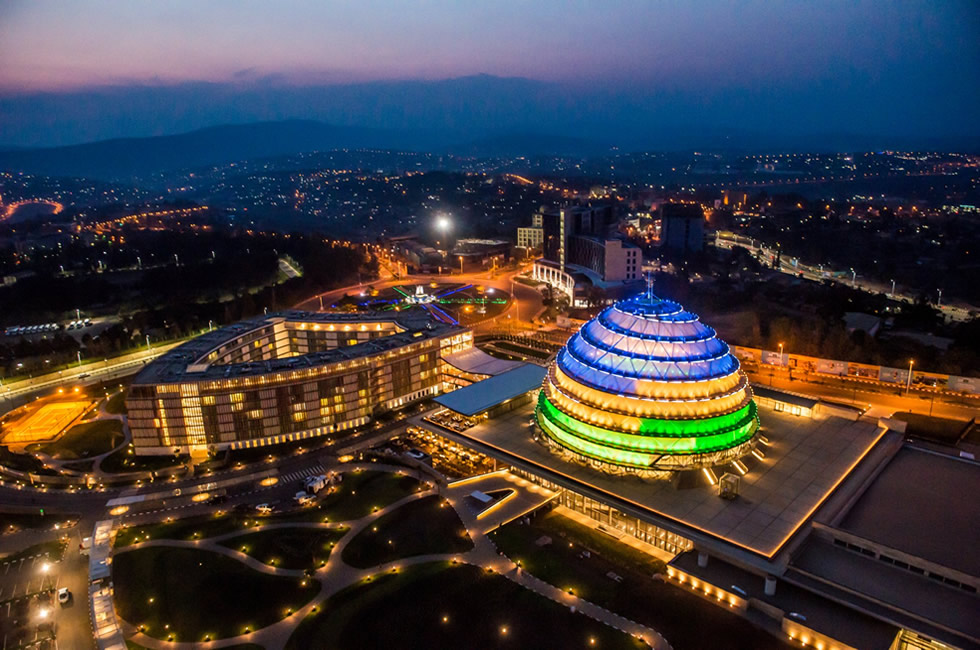
How Kigali Metamorphosed into one of Africa’s Most Livable cities
Paul Kamanzi, 41, has lived in Kigali since early 1995. Having been born in Uganda where his parents fled to escape political persecution during pre-liberation Rwanda, he was among the early returnees who took advantage of the country’s liberation in July 1994 from the genocidal regime to return and their home country to rebuild their lives.
“I have seen incredible infrastructural development ever since I came back. The face of Kigali has completely changed, and I’m happy to be a part of a generation that saw the beginning of this incredible pace of development,” he says.
Kamanzi goes on: “When I first came to Kigali, it was incomprehensible a dream to think about real estate in Kigali. Now several estates today are established in Gaculiro, Kicukiro and private projects in Kagarama, Kibagabaga and Kagugu, among others. And the momentum is continuing.”
Kigali today
Today, Kigali is a different place compared to 20 years ago. The street lights, paved roads, sidewalks and fancy coffee shops and the continually growing skyline are a main feature of the city. Kamanzi alludes to several iconic buildings in Kigali that have completely changed the city’s architecture and skyline.
Part of Kigali’s architectural development can be attributed to the growth of the private sector over the past decade, creating demand for more office space, particularly in the central business district.
The demand has peaked, thus resulting in shortages. For instance, the new Makuza Plaza is now expected to address part of the challenge the city has been facing, which saw office space rent cost an average of $18 per square metre per month.
To understand the present dynamics of Rwanda’s real estate, one should understand factors affecting supply and demand in the sector. Many developers, according to City of Kigali, are building structures in relation to market demand and affordability.
The increased supply of office space is inevitably going to lead to lower monthly rental charges and hopefully, people will stop turning residential premises into offices. Some of the buildings that have recently been built to mitigate shortage of office rent include CHIC, Kigali City Tower, Kigali Heights in Kacyiru, Soras Towers and M.Peace Plaza.
Kigali’s architectural development can also be seen in the context of the government’s ambitious economic development plans. For instance, the need to make Kigali a regional meeting, incentives, conferences and exhibitions (MICE) tourism hub has seen the construction of iconic conference facilities like the Kigali Convention Centre, completed in 2016.
Before that, the area around where the Convention Centre boasted average buildings, including the old Post Office and the once famous KBC, which had to be flattened to pave way for ultra-modern structures.
Talking of MICE, the hospitality industry has indeed helped change Kigali’s image, with hotels like Lemigo Hotel and Radisson Blu making Kigali a modern metropolitan that is now being described as Africa’s Singapore due to its rapid development, particularly in regard to its changing architecture.
The incredible story behind the changing face of Kigali would not be complete without paying homage to how Rwandans themselves who have worked hard to transform their city.
“We chose to think big, that is why we liberated the country,” President Kagame said on April 7, 2014, during the commemoration of the 20th anniversary of the Genocide against the Tutsi.
Tabaro says that Kigali itself generally is like the sun that disappeared into the darkness of the night, only to rise up the following morning with more splendour.
Iconic Kwa Rubangura and the Nyarutarama jungle
By 1995, the tallest building in the city was commonly known as Kwa Rubangura, in reference to the owner, Vedaste Rubangura.
Rubangura was one of the wealthiest Rwandans at the time. His building had five floors but only three were occupied. It had just two toilets that served almost the entire facility.
“Rubangura’s building was iconic by then. It was the major reference point of everything in the city but, although it still exists and has been renovated, it is now just a dwarf among giants,” Kamanzi says.
And the area in Nyarutarama, now home to the famous MTN Centre, was one vast jungle roamed by wild animals. There were no ultra-modern upmarkets in Nyarutarama or residential premises where Kigali’s who-is-who now reside.
Away from Nyarutarama, I meet with Peterson Tabaro, the head of Cyimana Sector in Kacyiru. From a shop where he’s perched on a chair, looking through the window towards the now picturesque Gacuriro neighbourhood, he tells me that even immediately after the genocide Gacuriro was just a series of farms, and later people started to build informal houses that mostly catered to the poor.
“Now even if you see those red-roofed houses that give way to the white houses of Vision City, which area itself has gone through a period of rapid development, seeing that people initially went there to cultivate the land. But over the last few years, we’ve seen how fast new, imposing buildings have sprung up. Now it’s an estate inhabited by the middle class,” he says.
Celestine Muranira has lived in Majerwa since 1996. From when he first came to this area, it was all about informal houses but over the years, such imposing buildings like the Ministry of Health headquarters together with a host of other modern buildings have completely changed the skyline of the place.
However, when you really need to see how the architectural complexion of Kigali has changed, you should visit Kacyiru. Right from where Kigali Heights is located, itself a new building that was only commissioned last year, there are new architectural wonders that are replacing the old buildings and the area itself is becoming a city within a city.
Elsewhere
And it is not only in Kigali City where we are seeing changing architecture. In 2010, the government announced that it had set aside Rwf1.5 billion for districts to construct modern houses for the needy to eliminate grass-thatched houses in the country, locally known as Nyakatsi. Travelling to rural areas, you are not likely to see any grass-thatched houses that were sanctuary for the rural poor 20 years ago.
Read MoreNyamirambo vs Nyarutarama: the Muzungu Dilemma
Muzungus in Kigali can be found just about everywhere. Once a rare sight, relegated to only a few predictable neighborhoods, they have managed to infiltrate their way into even the most far flung corners of the city. From Kicukiro to Kagugu, Gitega to Kimironko, they are everywhere.
Of course, some places are more densely populated than others (if you have ever been to Sole e Luna on quiz night or A.B.C. on a Saturday morning, you know what I’m talking about). A solid explanation for why muzungus choose to congregate in one place over another may never really be known, but here we try to get to the bottom of mysteries such as this.
It should come as no surprise that a large number of foreigners settle in the luxurious area of Nyarutarama. You need not be a Kigali regular to notice the lavishness and wealth present in this neighborhood. Home to a private tennis club, the country’s only golf course, and numerous opulent hotels and guesthouses, this part of town is the definition of new-money bourgeois.
Most appealing to the muzungu who likes to wear Sperry boat shoes, pop their collar, and brush elbows with other members of Kigali’s elite socio-economic status, the Nyaturama muzungu can easily pretend that they are back at home in the comfortable suburbs of New Jersey or Connecticut, or in a modern London or Tokyo flat. Only now, they have far more hired help and a vastly bigger living space.
While it may have been difficult to trade in your cramped New York City apartment for a Chinese-engineered mansion surrounded by fruit trees and exotic flowers, the team of house staff at your every disposal and large shiny Land Rover should help ease the adjustment.
Not that there is anything at all wrong with comfort — if you can afford it, why not? Let’s not pretend that we wouldn’t all like to live in a large, beautiful, comfortable house.
When all of your daily chores are taken care of for you, you can focus on bigger worries, like solving developing world’s problems, or selling European-designed telecommunications.
Most likely due to income and status, Nyarutarama also tends to attract older muzungus and those more seasoned ex-pats. Most muzungu families choose to nest in Nyarutarama or nearby and newly built-up Gaculiro and Kagugu.
When you are an expat with a family in Africa, you want to provide only the best: the most modern and sterile upbringing possible. Nyarutarama and its affluent residents epitomize Rwanda’s vision of a prosperous, contemporary, and distinctly affluent nation, one California-style mansion at a time.
On the other side of the coin, and far on the other side of town, exists a completely different universe: Nyamirambo. Due to its low rent prices, bustling streets, and unreliable running water and electricity, Nyamirambo attracts a much different crowd.
Generally, a younger, unrulier, and lower-income bunch, the foreigners who choose to live in Nyamirambo came to Rwanda looking for a truly “African” experience (or perhaps just for easier access to cheap beer). Rejecting the “new” Rwanda embodied by Nyaturama as a white-washed and characterless suburb, these muzungus pride themselves on their commitment to proletariat authenticity.
Popular among the volunteer crowd, Nyamirambo muzungus prefer this grittier, busier version of Rwanda. Those that choose to settle in this part of Kigali have no problem washing their own laundry by hand, shopping at Kimironko market, and taking bucket showers.
Because they have adjusted to a lifestyle so different from that they live back home, this group of ex-pats is more likely to find release in binge drinking and late-night shenanigans, activities that Nyamirambo caters to quite nicely.
What gives these two essentially polar-opposite places similar appeal? The short answer is that not all muzungus are the same. The longer answer is that these two enclaves of Kigali each offer very different versions of Rwanda. While the details in their reasons may differ, these two groups of muzungus can find common ground in their shared love of Rwanda.
Read More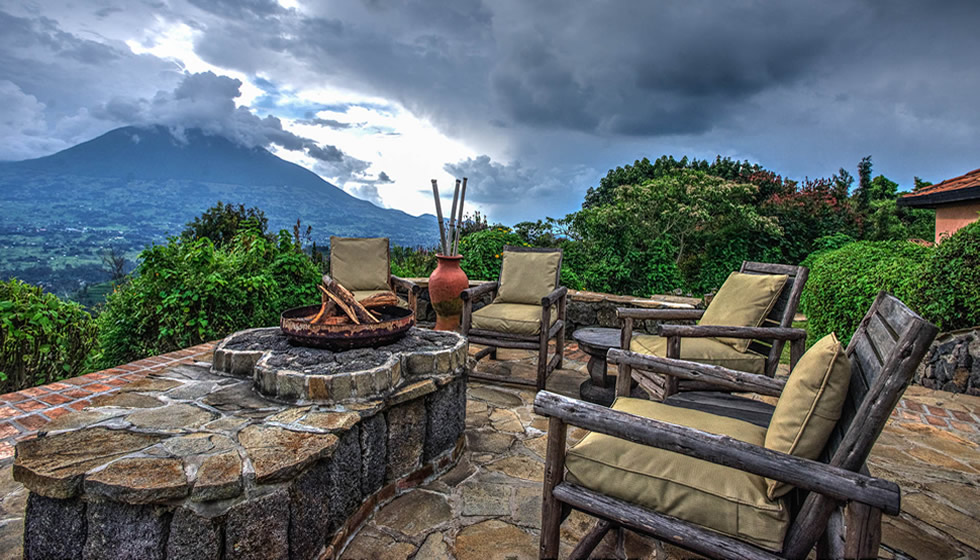
Rwanda: An Amazing Honey Moon Destination
It’s very important to plan your honeymoon on an African continent particularly Rwanda the land of a ‘’Thousand Hills’’. Rwanda is a magnificent beautiful country that offers a perfect honey moon destination in Africa. The country has favorable year round weather which means it can be visited at any month of the year depending on the traveler’s interest, its adventurous filled with scenic wonders, indeed it’s the right country to visit as you begin your marriage safari journey, it’s a perfect location to relax and enjoy Africa at its best.
Rwanda is a country of Choice for those that are looking for a truly unique off the beaten path experience in the heart of Africa, one of Africa’s most scenic. Spending the honey moon deep in the volcanoes national park forest with the most interesting to see endangered mountain gorilla is a memorable moment in life very difficult to forget, these apes are magnificent to watch in their natural habitat, the one hour you are allowed to stay with these animals is a life time experience one should not love to miss especially when you begin your marriage. Nothing is more adventurous than hiking and tracking chimpanzee and other primates in African Amazon the larges African montane forest (Nyungwe forest national park). Sharing the love of gorillas with that of chimps is regarded as a magical experience one should not love to miss on such a life time experience.
Rwanda offers you what is beyond your imagination, it’s one of the smallest countries in the world with no seaport, Lake Kivu offers you Africa inland cost with one of the best lodges beyond your imagination and adventure that gives you long lasting memories, you will enjoy beach activities like swimming, touring to nearby islands among more.
Kigali which is the largest and the capital city of Rwanda is one of the visited incredible Rwanda cleanest safest towns of Africa. Rwanda is known as one of the stable countries and your time here will be without worry of potential safety security problems, so you will be safe during your stay here. Everything in Rwanda superb ranging from the rare mountain gorillas, primates, wildlife, birds to luxury lodging all will meet your needs and beyond.
Depending on your plan, you can also extend your safari to Uganda where you can continue with wildlife viewing, chimpanzee and gorilla tracking, hiking and also white water rafting on the River Nile. Your safari can begin in Kigali and end in Entebbe -Uganda the pearl of Africa without long drive times and enjoy a True Africa beyond your imagination. Book with us we can design your honey moon safari the way you desire it to be, contact us for more information.
Read MoreHow to Rent a Van For Your Travel in Rwanda
Would you like to travel in a group? Are you looking for a family safari in Rwanda, the land of a thousand hills? Get a smooth ride with our reliable and affordable van hire in Rwanda including great buses for 4×4 car hire Rwanda. For any plans to Rwanda either it is family or group trip, you have a million reasons why you need to embark on a road trip using one of our comfortable van rental cars. We have the best selection of vans for hire in Rwanda for you to have a smooth road trip to any of your dream destinations.
Benefits of using Van rental cars in Rwanda
Luxurious and comfortable
Van rental cars come with adequate space for you and your cargo. Our classic van rentals have enough space for you stretch your legs and raise your head while the cargo is also accommodated. Hiring one makes your road trip easier than traveling in any other type of car. You can make a choice from our selection of comfortable van hire in Rwanda depending on the categories; 7 seater; 14 seater; 12 seater or 10 seater. They are perfect for business or travelers who prefer luxury safaris.
More options
If you have any idea about van hire in Rwanda then look no further than our selection of our comfortable vans for your road trips. We have variety of vans for rent suited for business trips and road trips. They are fit for off-road vacations as they come in 4×4, wide windows as well as rooftops making them the best option for wildlife viewing tours in Akagera National Park.
The best when it comes to fuel consumption and management
Looking for that one car rental with the best fuel consumption rate? If so, then renting our classic van rental cars has all the answers for you. Most of the safari vans have become preferred choice simply because of their low fuel consumption rate which is not the case with other larger vehicles. Renting one saves you some good cash in your wallet for you to cover other expenses on your road trip in Rwanda.
Affordable rates
Whereas van hire services have not been widely used, for a few who have tested their services can testify how affordable they are. Enjoy your road trip in Rwanda in a unique way and at affordable rates only with our comfortable van hire.
In conclusion, van hire in Rwanda is one way for you get your dream destination at ease. Rent our selection of vans at pocket friendly costs and have a smooth road trip in Rwanda this holiday.
Read More
10 Bad Driving Habits to Avoid in Rwanda
Renting a car in Rwanda is by far the best way to embark on a road trip. Every car rental agency has got its set terms and conditions or rather policies that every traveler should observe. However, most drivers including self-drive travelers have a tendency of insisting on some of the awful habits. For starters, self drive in Rwanda on a road trip is very easy and exciting although other road users tend to make everything seem difficult due to their bad driving habits.
At times, you will get surprised to see another car behind you and the person has not even indicated to you and on highways, most people simply start racing and they will want to overtake at a corner. To embark on a self-drive car hire Rwanda tour is more exciting, memorable but you have to be very keen while driving as most drivers tend to be reckless on the road.
Below are some of the risky things you need to avoid while on road trip in Uganda
Driving when you are drunk
Driving under influence of alcohol has become a common practice by road users today yet this puts you at risk. This doesn’t only affect your ability to react or make decisions but also may cost you based on road rules in Rwanda. At times, most solo travelers on self-drive trip in Rwanda think they are in a holiday and so drinking is a must do thing something that is very wrong. It is the worst thing anyone can think of and to be on safer side, you can do so at your respective lodge or hotel.
Ignoring traffic signs
Once someone hits the road, issues of traffic signs are totally ignored yet these play a significant role especially for your safety on road.
Not paying attention
Always be attentive and have a listening ear while on road trip in Rwanda. Make sure that you cross check your mirrors and any blind spots, traffic a head and around you. Be mindful of the pot holes when driving and ensure that you are never distracted in anyway.
Disregarding weather and road conditions
Before you embark on road trip in Rwanda be keen on weather and road conditions. In most cases, some weather conditions require you to drive slowly.
Not making the best use of indicators
Always remember the use of indicators or do not make the best use of them when it is already too late. Indicators are essential to make alert to other drivers.
Use of phones while driving
Everyone loves phones but do not get distracted by phone calls, texting. Put your full attention on your road trip and you will have the best of it.
Not putting on seat belts
To most road users, wearing a seat belt is at times looked at as crime but it is not. Wearing a seat belt is for your own safety on the road. Before you set off, remember to be on your seat belts.
Putting on high heel
This is a common vice with women but it is dangerous when you driving. The best is for you to have flat shoes or else simply relax and let someone else to take on the wheel.
Do not over speed
Over speeding is against traffic laws of Rwanda and major cause of road accidents. Be mindful of the driving speed sign posts along the road and other road users.
Read More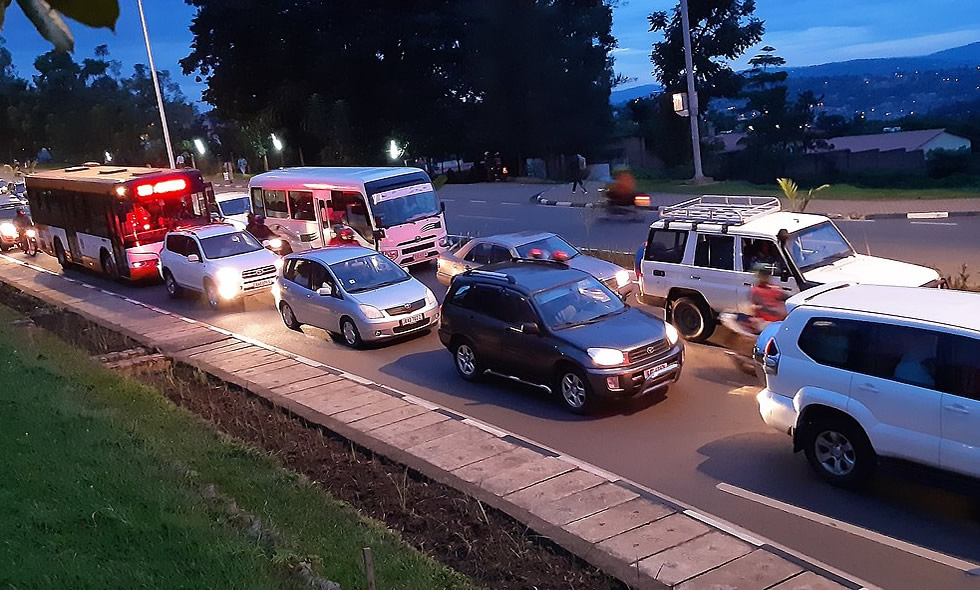
Traffic Tips for Driving in Rwanda
Rwanda is relatively safe compared to other countries. Driving in Rwanda is absolutely an exciting experience but requires some braveness while you are behind the wheels. For starters, higher chances are that you will face challenge driving in Rwanda’s roads as most of them are not yet to the standards of say United States or England. To get the best of your self drive experience in Rwanda, take a look at significant road safety rules and traffic tips for driving.
Driving in Rwanda always requires you to keep left and speed limit in town areas shouldn’t be over 40kms per hour and 60kms per hour in provinces.
Plastics are not tolerated, therefore do not dump rubbish anyhow while driving in Rwanda or else you will be penalized. The government of Rwanda banned all non-degradable polyethylene plastic bags in 2008.
Be prepared to drive along several terrains in Rwanda. Driving in Rwanda is amazing since most of its routes have been paved.
To drive in Rwanda, you should be at least 18 years that is for categories A and B and 20 for categories C, D, E and F.
Make sure that you have a valid driver license or international driving permit, car registration documents as well as car insurance certificates.
Do not drive at night in Rwanda-this is dangerous.
Do not drive when you are drunk. The legal blood alcohol level in Rwanda is 0.08 percent and random breath testing is done by police.
Road Safety Rules and Regulations in Rwanda
Before you embark on a self-drive tour or guided tour, be aware of traffic rules to avoid being taken by surprise by presence of traffic officers. Road safety in Rwanda is governed by the traffic and road safety Act.
Drivers should keep left when driving and if you are not familiar with road rules please rent a car and driver and still enjoy your road trip at your own pace.
The speed limit in town areas is 40kms per hour and 60kms per hour in provinces.
To drive in Rwanda, you need a valid local or international driving permit/license.
Driving Tips before starting a Car Hire
- Check out the blinkers for proper operation.
- Cross check if the tyres are inflated well.
- Prior driving a rental car please do some simple safety check
- Turn on the lights and move around to ascertain if all lights are working.
- When you enter into the car please adjust all mirrors and seats prior starting it.
Driving Tips while your Rental Car is moving
- Turn your head to check no one is coming prior joining the road.
- Take note of traffic lights-green color is always for you to look left and right, straight then left once more prior proceeding.
- Always be on seat belts and put on your seat belt before starting your car
- Make sure that the headlights are on and the car is visible 4 times the distance with its headlights on
- Please indicate in case you need to make a stopover.
- Keep within driving speed limit.
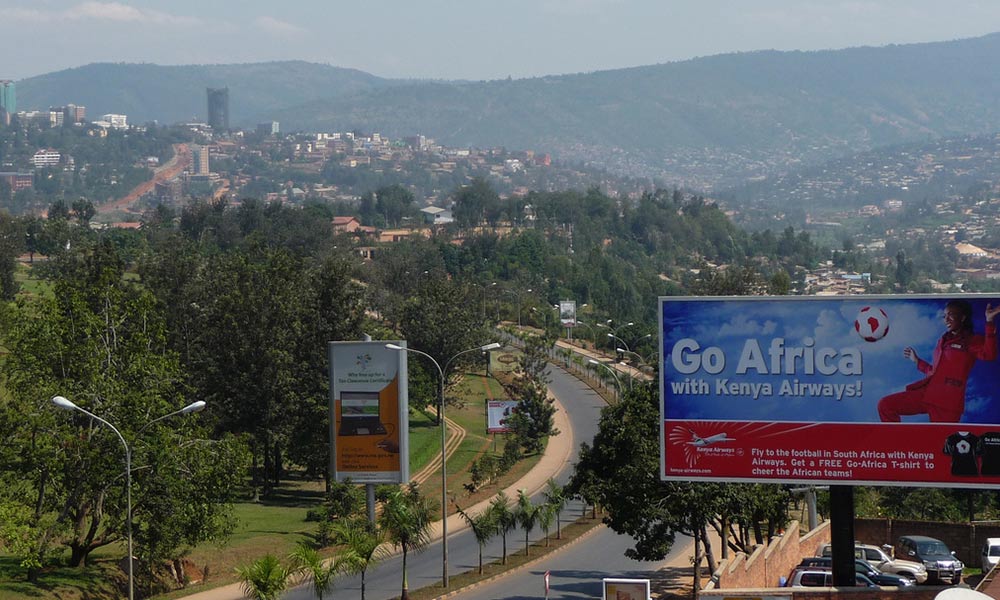
5 Most Popular Safari Locations in Rwanda
If you happen to be a nature lover or a budding photographer then Africa is the ideal destination for you to visit. It is one of the most visited tourist spots in the world. Rwanda tours are a must when you visit Africa for a vacation. According to All About Rwanda, this country has a summer spell during the months of June till august. This area is also famous since it has a large number of beautiful lakes; the landscape of the entire city is absolutely breath taking.
Lake Kivu
I am sure that you will be taken back by its beauty. The largest lake of Africa Lake Kivu is found her as well. There are vast tracks of hills and swamps here. The local essence of Rwanda lies in the simplicity of the place and its people.
Volcanoes National Park
Mountain gorillas are what Rwanda safaris are famous for. The entire belt is known for the large number of gorillas that are found here. There are many treks that follow these gorillas. The volcanoes that are found in the national parks are home to these mountain gorillas. So a trip here will ensure that you go on Rwanda Gorilla Trek as well.
You could also visit the golden monkey, the mountain gorillas form such an intrinsic part of the people’s lives here that every year in the month of June a ceremony is held to give names to the gorillas that live here. I had the chance to go on this particular safari. And let me tell this experience has left me speechless. It was a great feeling being able to interact with these huge animals.
A trip to this continent would be ideal for a week or two. You could make this vacation either by road or by the sea. Since there are so many water bodies in Africa traveling by a boat is a fabulous way to get to know the place better. You could also hire a plane and explore the dense jungles of Africa with the help of a pilot and a guide. But a Rwanda safari will ensure that you visit places that have been untouched by man so far and have the beauty of Mother Nature still intact.
Africa has a large number of reserves and wildlife parks that have been very popular amongst tourists. People from all different parts of the world visit this gorgeous place in large numbers every year. If you are a nature lover then you would love hiking on different trails to see the mountain gorillas. A regular hiking tour lasts for about a week. It depends on how much you are ready to spend on it.
These tours are inclusive of accommodation, food and transportation. You must ensure to have a gorilla permit if you are thinking of taking meeting the endangered mountain gorillas. When booking an all inclusive Rwanda safari these permits are also included in your fare. Thus it is a smart and a sensible way to explore the jungles and have a great vacation as well.
Read More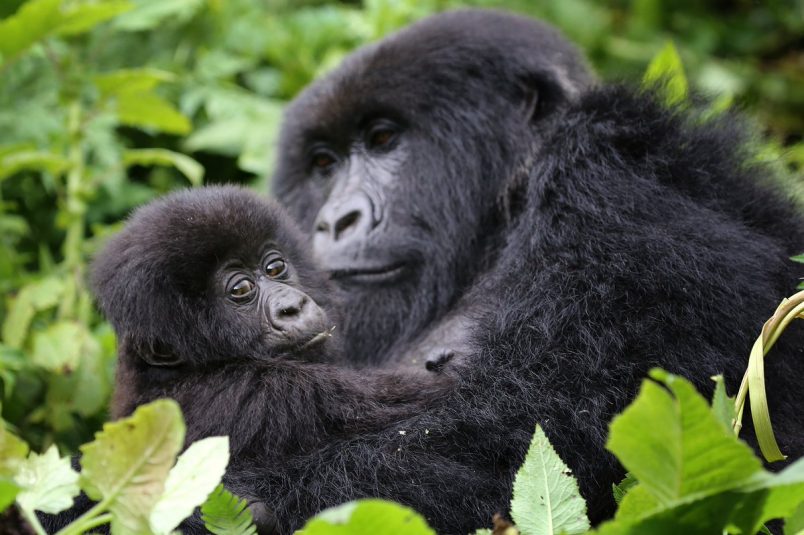
Rwanda Gorilla Trekking: An Unforgettable Experience
As interesting putting food in the mouth, gorilla tracking is one of the safari activities that is not isolated or missed by tourists when they are having a safari of their lifetime as this activity can’t be missed in menu of the various activities they want to explore which will bring you closer to related human beings. Some of the Gorillas families that are tracked include the following: Susa made up of 41 gorillas, Sabyingo, Amahoro etc. Just like in other countries like Uganda, where Gorilla tracking is done in Bwindi impenetrable national park and in DRC, it is done in Virunga national park. For Rwanda, it is done in volcanoes national park which is located in the northwest of Rwanda considered to be the only national park where gorilla trekking can be done. Primate tracking in Rwanda is done by various touring companies as the packages for this tracking ranges from 2 day gorilla trekking Rwanda to 12 day trekking Rwanda which gives a wide variety of Gorilla groups to be trekked.
More so, to even start trekking these so called primates in volcanoes national park, a tourism permit must be issued by the body concerned with tourism called Rwanda tourism board. This gives license to the tourists of which type of gorillas to be trekked at that moment. Permits for Rwanda Gorilla Trekking goes for around 750 dollars per day of which some bid of the money goes to the communities around the national park for development and well being of people around it. A primate tracking is most suitable in the dry months of June to September and also December, January and February making this activity easier than ever before as you will see below.
Although Gorilla tracking in volcanoes national park starts from 20 minutes to three quarters of the day in the evening, their some requirements that are needed to do this activity as tourists will go through a couple of challenges like rain, muddy soil, insects e.g. aunts which needs some bid of wearing strong shoes etc. These are some of the requirements needed to trek this amazing Gorillas are as follows.
Tip number one is dressing according to the Safari activity. Wear shirts made of synthetic material which tend to dry faster. This is due to the fact that in most cases, this activity may be done in the rainy season which needs some bid of drying faster to make the tourist more comfortable. Their after you are advised at the bottom to wear long pants made of synthetic material which also tends to dry faster than other type of clothes making the Safari more sweet and affordable to do . The other clothes like short jeans will make the activity more difficult to do as they will make the tourist uncomfortable and unable to walk properly.
Wear proper foot wear(boots) that is reaches above the ankle, this is because while moving though this good scenery of tropical forests, there will be thorns, sticky plants that may endanger the lives of the tourists most especially the legs. This will help you to move though the muddy soils, dangerous insects like the aunts that are of a danger to the lives of the human beings. On top of that, wear gators over those boots so that you can cover the remaining space which might be used to enter other staff like water making the tourist unreliable to do. On top of that wear high rubber willies with treads on the boots.
Pack enough food and water before you come for this activity as it mostly takes you a long period of time from morning to the evening hours during the dry months of June to September. This may be in form of snacks, a bottle of water most especially a liter is enough for the all day and it is advisable for one to bring these items along with him or herself after all some companies do provide some food to the tourists before proceeding to national park. When you have reached the park in side, you are not allowed to give any food to these gorillas which might endanger the life span of these primates.
Speak about your trekking preferences meaning that you as the tourist will have to communicate to specific company you had booked with to inform them about your fitness level and other diseases you may be facing plus also what type of Gorilla you might want to see first. This enables the guide to assign you to a group that is in with your range which you can afford to do as some of tracking groups may even track within or just outside the national park.
Making sure that video camera is working in good conditions and already for use. The first thing is to put in mind is that light from camera shouldn’t be there as long as it does not disturb the movements of the so called primates. These photographs which are made tend to be of a darked exposure because of the so many trees that are situated in the park more so a camera should be kept in a water proof bag so that water does not disturb its settings
Go for Gorilla tracking activity in a dry season is other tip for gorilla tracking meaning that the best months for Gorilla tracking are from June to September and also from December, January and February as these months tend to be dry because in the dry periods, movements of people within the park is much easier than ever before plus also cars are able to move in those roads drive safely. And that is why tourists are advised to come in the dry months although; they can also come in any period of the year. The wet months include the following march, April, May etc.
Practice Gorilla etiquette meaning that you should start and learn to respect the environment of these primates such as their behavior and knowing that you a visitor to them. Don’t be afraid to these primates as they are close friendly to the human beings. More so if they approach you, don’t just run for hide out as they think that you have stolen something from them which marks in the end of the tips for gorilla tracking in Rwanda
Read More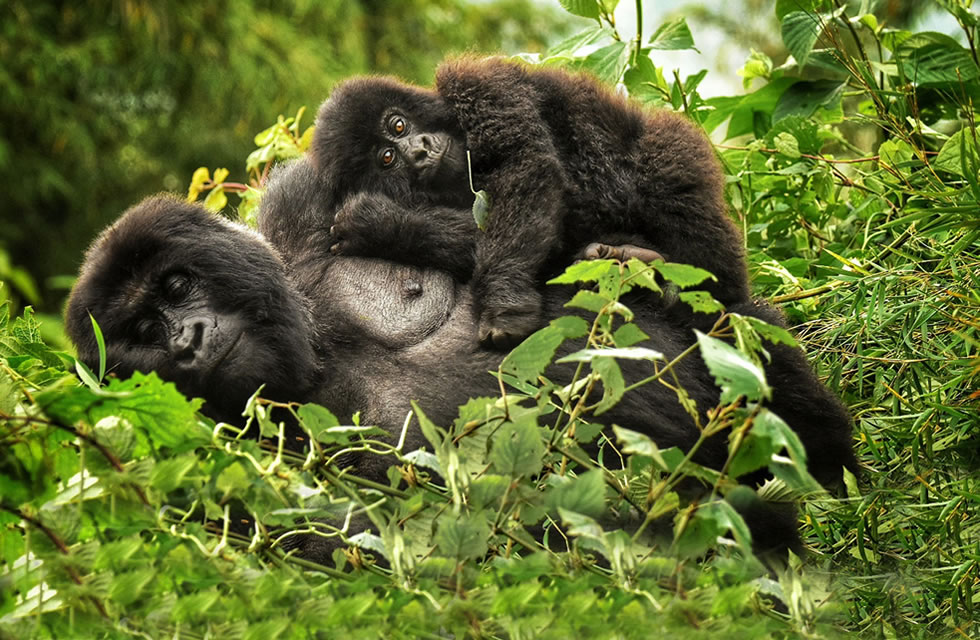
The Blazing Rwanda Gorilla Trekking Trail
It’s amazing to see less expected impressive attractions on your holiday in any corner of the world. Just imagine the joy and happiness felt when you capture such a moment. It’s a wish for many travelers though some instead fail even to grab the prime moments of travel.
However, jungle forest is a place full of surprises and remarkable adventures. gorilla tracking, golden monkey tracking, birding, culture walks, forest walks, boat rides, Dian Fossey visit, hiking are the main tourism activities within and around the park. When you take a trip to Volcanoes National park, you don’t only stick to the original travel plans since there are many other tourist activities which can be done within and outside the park and booked at last minute. Except gorilla tracking other activities can be booked on the very day for the adventure and you can also use one stone to kill two birds by paying for one activity and also view the other attractions for the other activity that exact point of visiting a beautiful area like this.
The most excellent perfect escape is when you track mountain Gorillas and also view other primates including the rare golden monkey. Gorilla tracking travelers enjoy tracking gorillas and also golden monkeys and both activities require you to have a minimum of two days since both activities kick off at the same time every day. But sometimes Golden monkeys and Gorillas move outside the forests and Travellers are able to view them while at their lodges of residence or during the other trek which is a great surprise since it happens to only lucky travellers.
If you get a chance and even take a nice photo captions with in that short time of the spot then next day’s adventure may be another advantage.To those who view the primates without plans of tracking enjoy a great moment without paying a penny the reason as to why some travellers love spending nights in well located Gorilla lodges & Accommodation with great chances both Gorillas and Golden monkey views. To experience and appreciate it is in most cases when you have paid for one and the other passes by as a bonus.
Another surprise is taking park in all the park interesting activities in just three days yet others move all the way for just one. If you have a duration of three day at Ruhengeri you can start by tracking gorillas, hike the lovely mountain of either Bisoke or Karisimbi in the afternoon on the first day and then start the other day by trekking Golden monkeys, visit Diany fossey tombs and also spend the sometime with the locals that’s if boat ride are not your thing. Alternatively you can use the afternoon of day one to visit lake Bulera and Rukundo. Ending your tour by doing all this trust me you will earn yourself the most romantic safari in Rwanda or simple the best Rwanda tour holiday ever. Make sure you shut your eyes and body for the Gorilla land adventure full of relaxation modes and adventure. For birders don’t miss out the opportunity of sporting hundreds of birds in volcano forest during the gorilla tracking adventure as you hike through the bamboo forest. Feel calm and ease as you explore Rwanda’s best park and the most desired tourist destination worldwide.
Read MoreAviation Africa 2019: Numerous Airlines Eager to Speak in Kigali
Both cargo and passenger airlines are on the list to participate in the conference. Airline CEOs like Astral Aviation’s Sanjeev Gadhia and Capt. Valentine Tongo from Nigeria’s Allied Air will cover the freight challenges while Philippe Bohn director general of Air Senegal and Marie Joseph Male CEO of Air Austral and the Vanilla Alliance will talk about the Francophile connections.
Regional Airlines will play a vital part in Africa’s air transport development and three CEOs, Miles van der Molen from South Africa’s CemAir, Rene Decurey from Air Cote d’Ivoire, Marc Gaffajoli from Gabon’s Afrijet and Andreas Kaiafas from Equatorial Guinea’s Cronos Airlines will talk about how to grow from a start-up to an established stable regional carrier.
The Major airlines like Ethiopian, Kenyan and Egypt are also expected to participate.
RwandAir’s CEO Yvonne Manzi Makolo will give her take on the opportunity to develop links across Africa and share the plans for the host airline’s hub as well as discussing the issues of retention, recruitment, diversity and culture, while H.E. Mr. Akbar Al Baker, the CEO of Qatar Airways will bring a different perspective to the floor. He will be interviewed in a one-to-one with journalist, broadcaster and conference chairman Alan Peaford MBE about the view from non-African airlines of Africa’s potential; of the challenges of dealing with political issues beyond an airline’s control; about alliances and whether they work in today’s climate and about his own role as chairman of IATA – the international airlines group.
The head of Africa’s airlines association AFRAA will update the audience on Africa’s changing position in the world market and address how African airlines are changing perceptions on issues such as safety.
The Summit will be attended by heads of state, government ministers and director generals of civil aviation from participating African countries and with keynotes from IATA as well, then the issues of protectionism, high taxation and airport costs are likely to be addressed.
The Summit will be the first ‘silent conference’ in Africa. The central location in the exhibition hall – featuring more than 110 companies – will see delegates having special headsets allowing them to focus on the speakers in both English and French.
Speakers, VIP delegations, delegates and exhibitors will all be together in the exhibition hall during breaks. “This is recognised as a great networking event,” says event organiser Mark Brown from TIMES Aerospace. “There are big name speakers addressing serious subjects, global exhibitors and African companies showing what is now available for the growing African market – and most of all there are decision makers from African governments. Aviation Africa has unrivalled networking opportunities and we think Rwanda will not disappoint.”
Read More